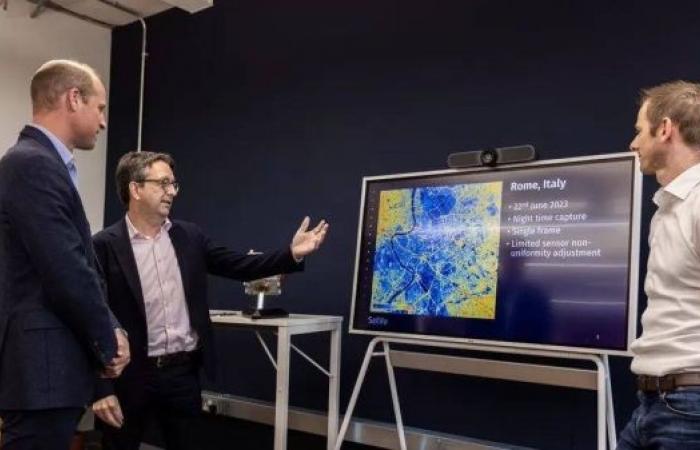We show you our most important and recent visitors news details HotSat-1: UK spacecraft maps heat variations across Earth in the following article
Hind Al Soulia - Riyadh - LONDON — A novel UK satellite has returned its first pictures of heat variations across the surface of the Earth.
HotSat-1 carries the highest resolution commercial thermal sensor in orbit, enabling it to trace hot and cold features as small as 3.5m across.
In the initial imagery, a Chicago train is observed moving through the night and the flame fronts of Canadian wildfires are precisely mapped.
London operator SatVu plans to launch seven additional spacecraft.
This will increase the volume of data it can acquire but also reduce the time between passes over particular locations, meaning changes in a scene can be detected more rapidly.
HotSat-1, with its mid-wave infrared camera, was assembled by Surrey Satellite Technology Ltd (SSTL) in Guildford and launched in June on a SpaceX rocket flying out of California.
The spacecraft manufacturer is due to complete its in-orbit testing and commissioning phase in the next week.
"At that point 'we get the keys', so to speak, and we'll then be able to task the satellite ourselves and get the data down for our customers," Tobias Reinicke, the chief technology officer at SatVu, told BBC News.
HotSat-1's heat maps - still imagery and short videos - should have wide application, but especially in climate-related matters.
They'll permit urban planners, for example, to see roof tops and walls. This will enable them to understand the temperature profiles of individual buildings, offices and factories. It's information that can identify infrastructure that's wasting energy and is in need of better insulation.
"We've got 28 million homes in the UK, most of which are quite poorly insulated," commented Prof Emily Shuckburgh.
"Being able to identify those buildings with this sort of information, prioritising them for better insulation and then assessing the quality of that is really, really important," the director of Cambridge Zero, the University of Cambridge's climate change initiative, said.
Alternatively, the maps will show the "heat islands", such as large, open car parks, which add to the heat stress in cities and will need to be cooled, perhaps with a line of trees.
The data is also sure to provide intelligence to the financial and insurance sectors - and even the military - by revealing how temperatures in a scene change over time. It's possible, for example, to get a sense of the volume and type of output from a factory just from its heat signature.
In the imagery on this page - the redder the colour, the warmer the surface; the bluer the color, the cooler it is.
The technology in HotSat-1 was funded with R&D money from the UK and European space agencies (UKSA & Esa).
Independent remote-sensing expert Dr Simon Proud commented: "The prospects of HotSat-1 for urban planning and agriculture are exciting. But we need to assess how accurate the data is, especially during the day when the satellite sees sunlight on top of the actual temperature.
"It's also key to have stable measurements over time - essential for monitoring the success of interventions like adding roof insulation to a house or trees to a car park," the RAL Space and National Centre for Earth Observation scientist told BBC News. — BBC
These were the details of the news HotSat-1: UK spacecraft maps heat variations across Earth for this day. We hope that we have succeeded by giving you the full details and information. To follow all our news, you can subscribe to the alerts system or to one of our different systems to provide you with all that is new.
It is also worth noting that the original news has been published and is available at Saudi Gazette and the editorial team at AlKhaleej Today has confirmed it and it has been modified, and it may have been completely transferred or quoted from it and you can read and follow this news from its main source.

